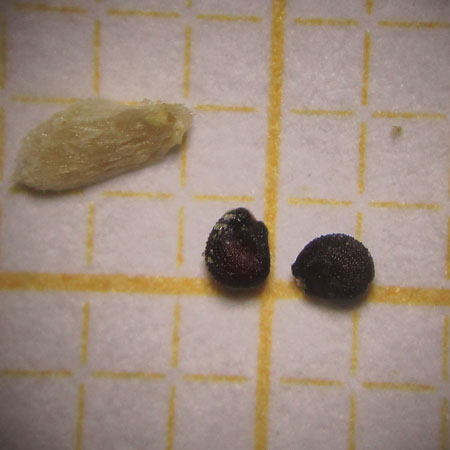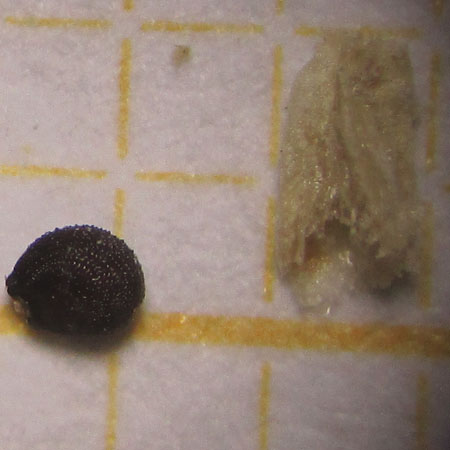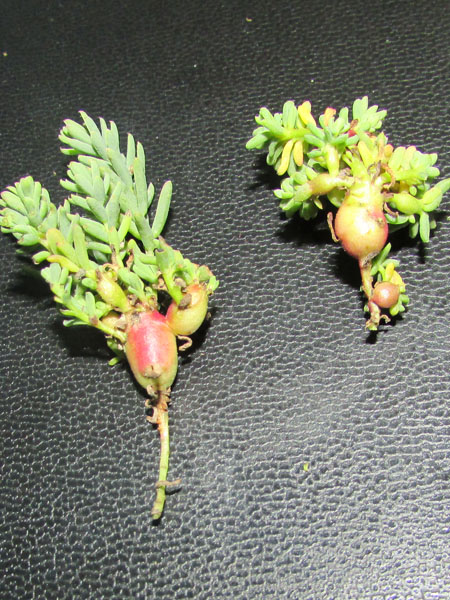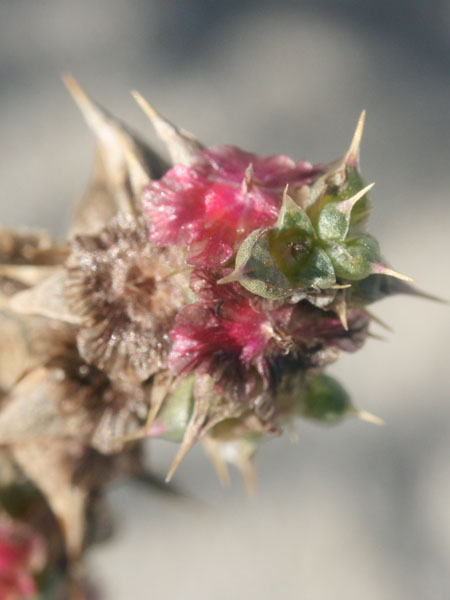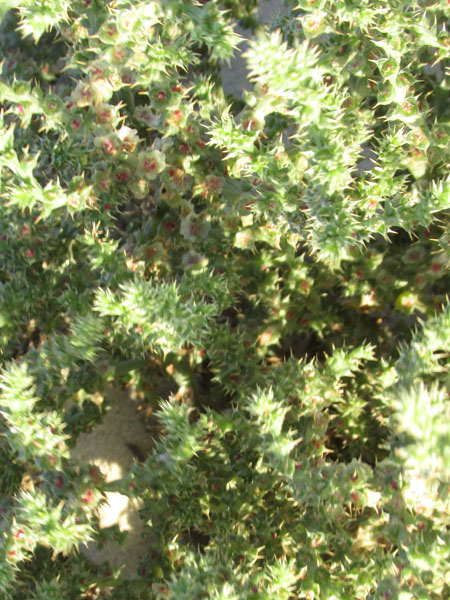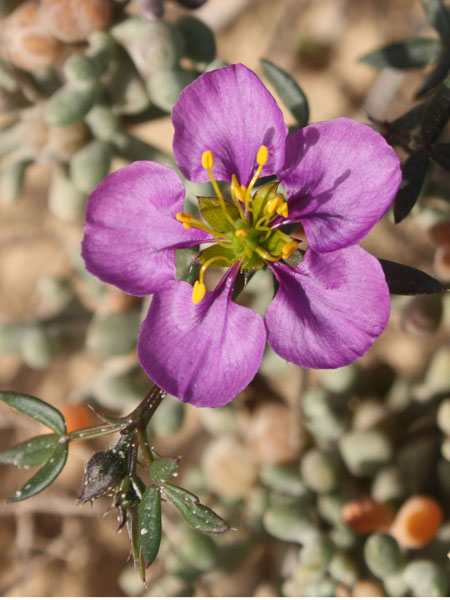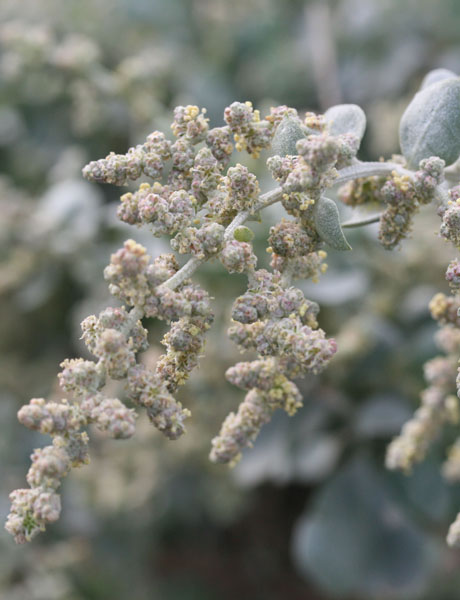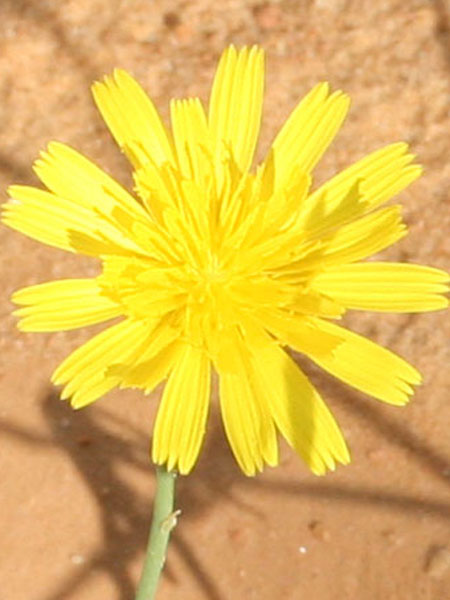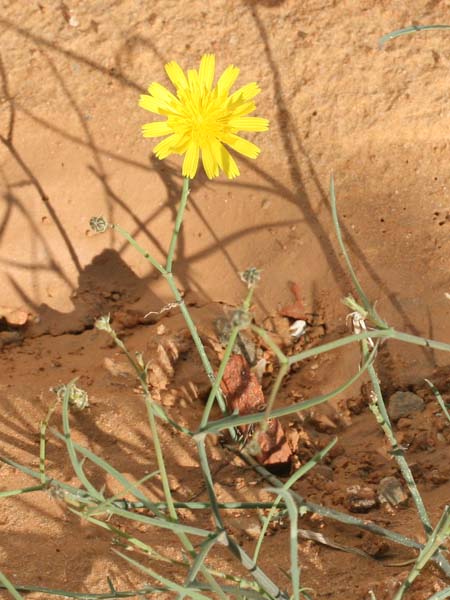Arthrocnemum macrostachyum
Kingdom : Plantae / النّباتات
Division : Spermaphyta / البذريات
Clade : Magnoliophyta or Angiospermae / مستورات البذور
Class : Eudicotyledoneae / ذات الفلقتين
Order : Caryophyllales / رتبة القرنفليات
Family : Amaranthaceae [Chenopodiaceae] /فصيلة السّرمقيات أوالرّمراميّة أو القطيفيّة
Genus : Arthrocnemum
species : macrostachyum
Chromosomes: 2n=36
Protologue
(Moric.) K. Koch, Hort. Dendrol. 96, n° 3 (1853)
Synonyms
Salicornia glauca Delile, Descr. Egypte, Hist. Nat. 49 (1814), non Stokes, Bot. Mat. Med. 1: 8 (1812).
Salicornia macrostachya Moric., Fl. Venet. 2 (1820).Arthrocnemum indicum (Willd.) Moq., Chenop. Monogr. Enum. 113 (1840). Arthrocnemum macrostachyum (Moric.) Moris, Enum. Sem. Hort. Taur. 1854: 35 (1854). Arthrocnemum glaucum (Delile) Ung.-Sternb., Atti Cong. Bot. Firenze 1874: 283 (1876), nom. illeg.
Common names
Tunisia Arabic English French Tamazight
غدّامه (Kerkéna)
حماضة
حماضة مقلوبة (Mehdia)
شنان
Glaucous glasswort
Arthrocène
Salicorne à gros épis
Hardjem
Toxic
no
Edible
no
Latex
no
Botanic description
Genus description
"
Species description
"Perennial rooted sub-shrub, articulated 20-60 cm to 1 meter high. Plant glaucous then yellowish green, forming irregular bushes, very common around sebkhas.
Stems erect or decumbent, radicating. Twigs green, glaucous, yellow or reddish composed of cylindrical, fleshy, thick. Leaves welded ended in bidentate cup. Flowers hermaphrodites grouped by 3 in a superficial cavity, long enough exserted and leaving in the axis after their fall, a simple small box. Fruits achenes Seeds tuberculous brown or black, shiny, with a hard envelope.
Botanic References
Pottier-Alapetite G. (1981). Flore de la Tunisie Angiospermes –Dicotylédones (Apétales- Dialypétale , Première partie). Imprimerie Officielle de la République Tunisienne (Eds), 57 p. Edouard LE FLOC’H, Loutfy BOULOS et Errol VELA. (2010). Catalogue synonymique commenté de la FLORE DE TUNISIE. République Tunisienne, Ministère de l’Environnement et du développement durable, Banque Nationale de Gènes. 500 p www.theplantlist.org
Biology
Life form Perinnial Type form Hemicryptophyte Photosynthesis C3
Phenology
Blooming
JanuaryFebruaryMarchAprilMayJuneJulyAugustSeptemberOctoberNovemberDecember
Fruiting
JanuaryFebruaryMarchAprilMayJuneJulyAugustSeptemberOctoberNovemberDecember
Map Localization
Ecology
Adaptation Species likes a strong light to develop. It tolerates direct exposure to sea spray. It provides a useful shelter for some species of small mammals and birds. Salt bladder yes Invasive no
Geographical distribution
Localization Biocimatic stage Annuel pluviometry (mm) GPS Djerba (Déc.2013) Higher arid 209 33°52'49.18"N / 10°44'55.13"E 33°53'25.51"N / 10°50'34.35"E Monastir (Sahline, Déc.2013, Nov. 2014, Fév.2016) Inferior semi-arid 331 35°46'11.09"N /10°42'40.35"E 35°46'5.87"N / 10°42'48.09"E Sousse(Enfidha, Déc.2013, Juin 2016) Inferior semi-arid 354 36° 4'1.62"N / 10°24'21.78"E 36° 1'5.27"N / 10°25'37.87"E Cap Bon (Korba, Mars 2014,Fév.2016) Superior semi-arid 444 36°34'1.46"N / 10°51'38.94"E 36°34'49.79"N / 10°52'6.79"E
General uses
Pastoral plant exclusively appreciated by camels. The sheep consume it dry.
Medicinal uses
"In the old days, it was used as an antidote.
NOTE : This website is not that of herbal medicine and assumes no responsibility for the negative effects of the use of plants. Seek advice from a professional before using a medicinal plant.
Systems / Organs / Effects
Digestive System Nervous System
Description of the seeds
Form D form External structure any Ornamentation rough Type of seed Average length of 10 seeds 0.9 ± 0,1 (mm) Average width of 10 seeds 0.7 ± 0,1 (mm) Average thickness of 10 seeds 0.2 ± 0,1 (mm) Average mass of 100 seeds (g)
Test results
TPC DPPH ABTS+ FRAP Year mg GAE g-1 MS CI50 g ml-1 CI50 g ml-1 CE50 g ml-1 11,72± 0,19 197,44± 4,67 210,56± 4,65 865,76± 30,81 2016 Total Phenols content(TPC), Anti-radical potentialities against (DPPH, ABTS), Ferric reducing antioxidant power(FRAP)
Molecules : ADN / Proteins
Chromosomes : 36 Uniprot NCBI
Tunisian references
Chaieb M et Boukhris M. (1998). Flore succinte et illustrée des zones arides et sahariennes de Tunisie. Association pour la protection de la nature et de l’environnement, Sfax. 186 p.
Other references
Bilquees Gul, Khan M Ajmal (1998). Population caracteristics of the coastal halophyte Arthrocnemum macrostachym Pach .J.Bot., 30(2) : 189-197. Custódio L, Ferreira AC, Pereira H, Silvestre L, Vizetto-Duarte C, Barreira L, Rauter PA, Alberício F, Varela J(2012). The marine halophytes Carpobrotus edulis L. and Arthrocnemum macrostachyum L. are potential sources of nutritionally important PUFAs and metabolites with antioxidant, metal chelating and anticholinesterase inhibitory activities Botanica Marina 55; 281–288. Feroz Khan K, Sanker G, Ramamoorthy K, Sugesh S (2013). Antibactirial Activities of salt Marsh Plants Against Marine Ornemental Fish Pathogens. American Journal of Drug Discovrry and Development. Mohsen AA, Elhaak MA , Hamada EAM and El-Gebaly FE (2015). Adaptation potential of two common halophytes to salinity stress in the Salt Marshes of lake Burullus in Egypt IJAPBC – Vol. 4(4)





















